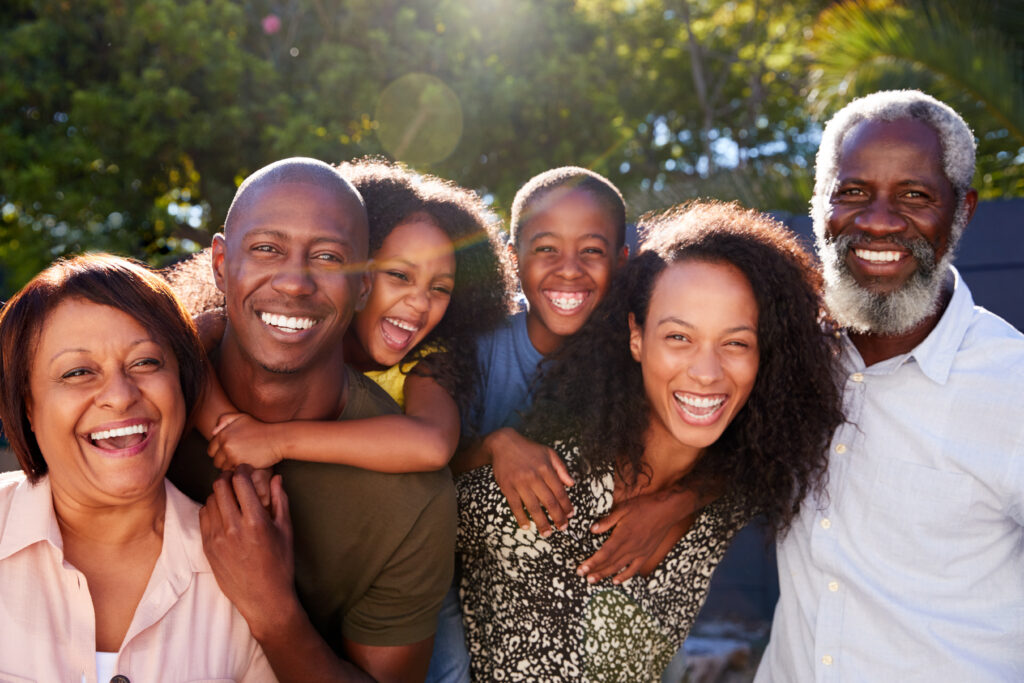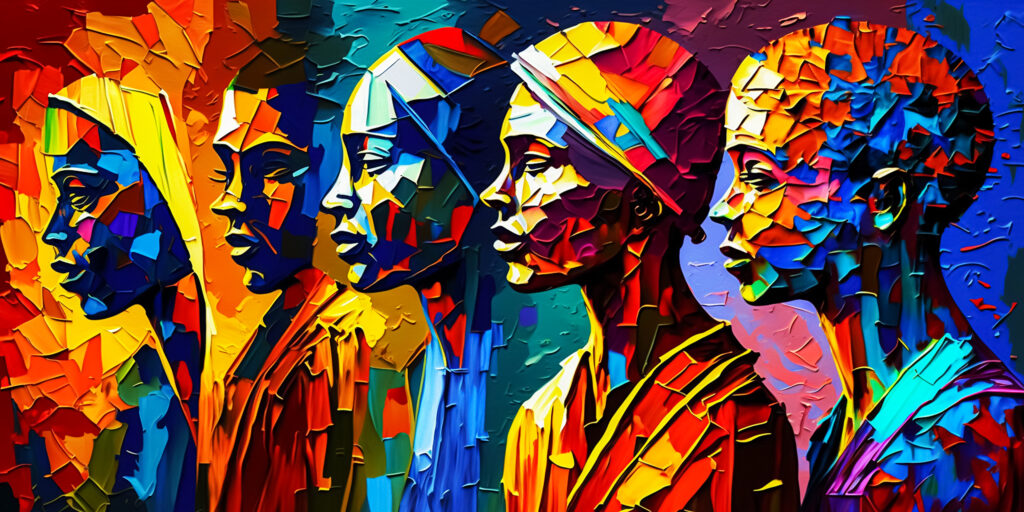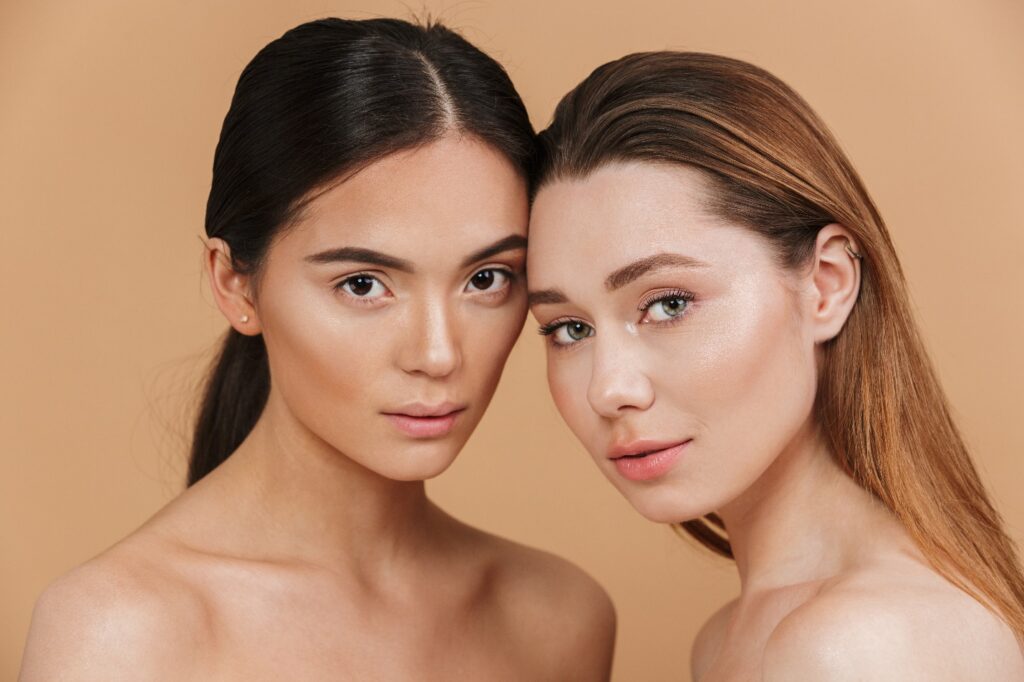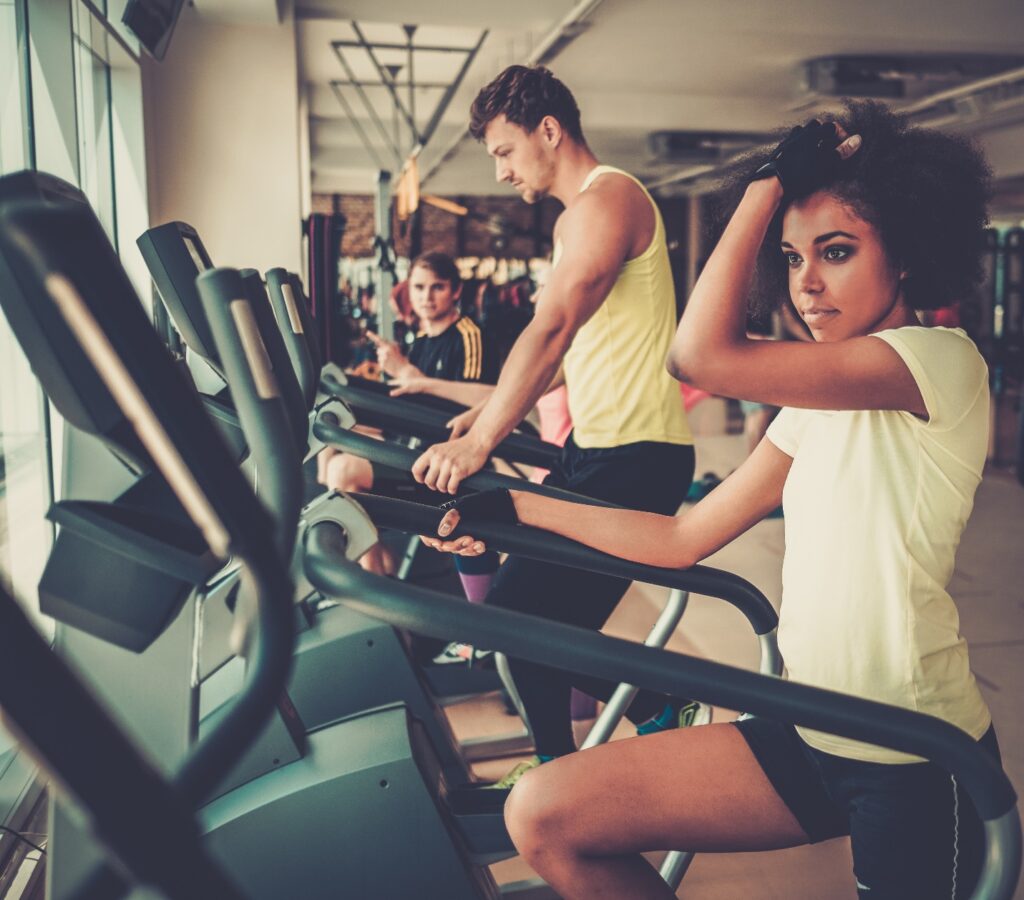Embracing Global Mindfulness: How International Perspectives on Wellness Can Transform Your Life

Embracing Global Mindfulness: How International Perspectives on Wellness Can Transform Your Life In our increasingly interconnected world, mindfulness has become a powerful tool for enhancing well-being. While mindfulness practices are often associated with traditional Eastern philosophies, many cultures around the world have long embraced unique approaches to achieving inner peace, reducing stress, and cultivating balance. By broadening our perspective to incorporate these global insights, we can enrich our own wellness journeys in new and transformative ways. Our recent meta-research study on global mindfulness practices showed five mindfulness approaches to help you be the best version of yourself. 1. Japanese “Ikigai” – Finding Your Reason for Being In Japan, the concept of ikigai represents one’s sense of purpose or “reason for being.” It’s not just about what you’re good at or what brings you joy; ikigai is about finding the sweet spot between your passions, your strengths, and what the world needs. This philosophy encourages us to align our lives with our values and purpose, leading to a deeper sense of fulfillment. To incorporate ikigai into your daily life, start by reflecting on these questions: What activities make you feel truly alive? What skills do you possess that the world needs? How can you bring together passion and purpose? By asking ourselves these questions, we begin to cultivate a meaningful life, which in turn promotes mental well-being and reduces the stress and dissatisfaction that can arise from a lack of purpose. 2. Scandinavian “Hygge” and “Lagom” – Embracing Contentment and Balance In the Nordic countries, particularly in Denmark and Sweden, the concepts of hygge and lagom provide insights into living a balanced, fulfilling life. Hygge, which is Danish, refers to a feeling of coziness, contentment, and simplicity—often achieved by savoring small, pleasant moments, such as curling up with a good book or sharing a warm meal with friends. Lagom, a Swedish term, translates to “just the right amount.” It embodies the idea of balance and moderation in all aspects of life, whether it’s work, food, or leisure. Together, these philosophies remind us that well-being doesn’t come from extremes or constantly striving for more. Instead, it’s found in appreciating what we have and making space for moments of joy and calm. To bring hygge and lagom into your life: Set aside time to relax and enjoy simple pleasures without feeling guilty. Focus on creating a healthy blend between work, rest, and play. Keep things in moderation; avoid overindulgence and focus on what truly matters. 3. South African “Ubuntu” – Building Connections and Compassion Ubuntu, a philosophy that originates from various African cultures, particularly South Africa, centers on the belief that “I am because we are.” This approach highlights the importance of community, compassion, and interconnectedness in personal wellness. Practicing ubuntu involves recognizing the value of empathy and understanding, not only toward ourselves but also toward others. Incorporating ubuntu means: Fostering a sense of community with those around you. Practicing compassion and understanding in your relationships. Reminding yourself that your well-being is linked with the well-being of others. This interconnectedness can help reduce loneliness, stress, and anxiety, promoting a stronger sense of belonging and emotional support. 4. Indian “Pranayama” and the Breath of Life In India, pranayama—a centuries-old practice focused on controlled breathing—forms a cornerstone of wellness. Breathwork, as a mindfulness practice, has been proven to reduce stress, improve concentration, and promote a sense of calm. This practice involves deep, controlled breathing techniques that help balance the body and mind, making it a powerful tool for emotional and physical well-being. To introduce pranayama into your routine: Dedicate a few minutes each morning to deep breathing exercises. Try breathing techniques like “box breathing” – here’s how: inhale slowly through your nose using your diaphragm for a count of four, hold your breath for a count of four, exhale slowly through your mouth for a count of four, and hold your breath again for a count of four. This exercise will help to reset your nervous system when feeling overwhelmed. Practice mindful breathing to stay present and grounded during stressful moments. 5. Hawaiian “Ho‘oponopono” – The Power of Forgiveness and Reconciliation In Hawaii, the traditional practice of ho‘oponopono teaches us about healing through forgiveness, both of ourselves and others. This practice, meaning “to make right,” is based on the idea that unresolved anger and resentment block us from achieving true peace. By embracing forgiveness, we clear mental and emotional clutter, opening up space for happiness and growth. To begin practicing ho‘oponopono: Reflect on any unresolved issues or lingering resentments in your life. Repeat simple phrases like “I’m sorry,” “Please forgive me,” “Thank you,” and “I love you,” which help cultivate a mindset of healing and forgiveness. Release what no longer serves you, allowing yourself to move forward without the weight of past grievances. Bringing Global Mindfulness into Your Daily Life While each of these practices originates from different cultural backgrounds, they share common threads—an emphasis on balance, purpose, connection, and self-compassion. By exploring these perspectives, you gain insights that go beyond traditional Western views of wellness and open yourself to a broader, more enriching experience of mindfulness. Incorporating even a few of these global practices can lead to profound shifts in your mental well-being, enhancing resilience, clarity, and joy. When we embrace these diverse perspectives, we’re not only expanding our understanding of mindfulness but also enriching our own lives and deepening our connection with the world around us. By opening ourselves up to these international insights, we can develop a holistic approach to wellness that is as inclusive and multifaceted as the world we live in. Our Health and Life Coaches help people incorporate mindfulness into their daily lives, so if you need a little help let us work with you to customize your 90-day plan. Learn more about how we help people thrive in ways that foster what’s best for their well-being. Contact us today!
Women are Taking Control of their Well-Being…Again!

Women are Taking Control of their Well-Being…Again! Since 1978, women’s history started as a week, then in the late 1980’s the month of March was established as Women’s History Month. A time to celebrate and honor women along with all their contributions to society. In honor of Women’s History Month, let’s empower each other through our health, wellness and overall well-being by taking a walk through time and reflect on our strong roots in wellness. Ancient Wisdom of Women and Wellness The roots of women’s wellness can be traced back to ancient civilizations where women held significant roles as healers, midwives, and herbalists. In cultures such as Ancient Egypt, Greece, and China, women played essential roles in administering healthcare and passing down traditional healing practices from generation to generation. Midwifery, in particular, emerged as a sacred art practiced exclusively by women, emphasizing the importance of female knowledge in childbirth and maternal care. Medieval Challenges During the Middle Ages, the rise of patriarchal systems posed challenges to women’s involvement in healthcare. Despite facing societal constraints and persecution, women persisted in their roles as healers and caretakers. Women like Hildegard of Bingen, a German abbess, herbalist, and mystic, defied societal norms to pursue their passion for herbal medicine and holistic healing. Their resilience paved the way for future generations of women to reclaim their place in the field of wellness. The Renaissance The Renaissance marked a period of significant advancement in medicine and science, yet women continued to face barriers to entry into the male-dominated medical profession. However, pioneering women, like Elizabeth Blackwell, shattered glass ceilings by becoming the first female physicians in the United States, challenging gender norms and advocating for women’s access to quality healthcare. Their trailblazing efforts opened doors for women to pursue careers in medicine and contribute to medical research and practice. Modern Revolutions The 20th century witnessed remarkable strides in women’s wellness, fueled by movements for gender equality and reproductive rights. Women’s health advocates like Dr. Rebecca Cole, who was the second African American woman to become a medical doctor in the later 1800’s; and Margaret Sanger, a first generation Irish American woman who spearheaded campaigns for accessible birth control, maternal healthcare, and improved sanitation, laying the groundwork for the modern women’s health movement. The establishment of organizations such as Planned Parenthood and the World Health Organization’s Department of Gender, Women, and Health furthered the cause of women’s wellness on a global scale, addressing issues such as reproductive health, gender-based violence, and disparities in healthcare access. Current Day In the 21st century, women continue to lead the charge in redefining wellness as a holistic concept encompassing physical, mental, and emotional well-being. From the rise of integrative medicine to the proliferation of wellness influencers promoting self-care and body positivity, women are at the forefront of shaping contemporary wellness trends. Moreover, initiatives advocating for inclusivity and intersectionality in healthcare seek to address the unique needs and challenges faced by women of diverse backgrounds and identities, ensuring that women’s wellness remains a priority for all. Based on this research, you could say that well-being is natural for women. It’s our most authentic place. Yet, we get caught up in day-today and can neglect our well-being. So, as current day women, Let’s remember our wise roots in wellness! Lifestyle Beautiful™ helps its clients accomplish better wellness by connecting them to the most authentic versions of themselves. Learn more about how we help people thrive in ways that foster what’s best for their well-being. Contact us today!
Black Well-Being: Interview with Our CEO

Black Well-Being: Interview with Our CEO There are a number of unique factors that affect the well-being of people within the black community a.k.a. “Black well-being.” Our Health and Life Coaches are equipped to support the well-being needs of this community. They focus on the individual while recognizing the community and identity aspects that may play a role in their overall well-being. We interviewed our Founder & CEO Meigan Ward, who is a studying International Psychologist and Health and Life Coach. She shared her insights on the topic – based on her lived experiences and empirical research on mental health and the black community. Here is the full interview! What is Black well-being and how is it different than general well-being? “I get this question a lot from people who are on a journey seeking to understand problem solving the human problems – meaning the problems unique to the experiences of humans on an individual, organizational and societal level. Let’s start with a common human problem – burnout. Burnout is a health crisis named by the World Health Organization in the last few years. There are various factors that can put someone at risk for burnout. These burnout risk factors are typically found throughout the unique life experiences we each have. I’ll note that when evaluating these risk factors, I am always careful not to stereotype a person based solely on race/ethnic identity. Instead, I create the space for acknowledgment of different experiences that occur in historically marginalized identity groups. Especially, visible identity differences. So, “Black well-being” is the acknowledgment of factors that may reduce or increase the well-being of people with a shared visible identity.” What are shared visible identities? “Well, it’s two-fold. Starting with visible identities – which are traits that are visually available to the eye of others; whereas they can form a perception of your visual identity. This concept of visible identities is so important to understand because it is the impetus that forms the challenge of biases for people who have a visible identity – a visible identity that has been historically marginalized. Here’s the brief science on how our brains process visual information: The externally visible information (e.g., a trait such as being visually perceived as black/AA based on visible skin color/hue) is received through the visual pathway to the cortex. So, from eyes to the surface of our brain. It is important to note that more than 50 percent of the cortex is devoted to processing visual information. As humans, we are wired to index heavily on appearance. So now let’s tie in the second part – shared visible identities… people who look similar (i.e., share a visually evident identity) are categorized in the brain based on their appearances and we are then prone to acting as a result of the categorization. It’s why chivalry exists. A man would see, what they perceive as a woman, and act chivalrously toward her. Or, a person sees a black man with a hoodie on and thinks they might be dangerous. As a society, we make attempts to be wiser than our innate tendencies to act based on these visual categories. But, like anything else, some people “filter and validate” as they categorize better than others. For those that do not do this filtering and validation step well, their interactions with people who have been historically marginalized can have multiplying negative affects on the well-being of marginalized folks. For example, the man with the hoodie is stared at or the police are called for no reason other than he seemed suspicious. He faces the feelings of isolation, social mistrust and even threats to his physical safety. The well-being of that man could be negatively impacted simply because of the visual identity of presenting as Black/AA. In turn, other Black men, who share a visible identity face similar obstacles in society, so this group has shared visible identities that have unique factors that impact their well-being. There are also socio-economic factors that add to the unique needs of well-being for Black people, but for this conversation I want to highlight the most pressing factor, which is visible identity.” What advice do you have for people in the Black community who may be dealing with burnout due to paying the Black Tax or working harder for less, all in the spirit of Black Excellence? “Be careful in the demand for Black Excellence. It can promote Black exceptionalism which can harm the well-being of Black people. That is because exceptionalism can create an unforgiving level of performance expectations in various aspects of one’s life. Instead, demand your humanization – which is key to balancing excellence and well-being.” Can you tell us more about humanization? What advice do you have to demand humanization without compromising your professionalism? “There are 3 main concepts in humanization, acceptance, respect and understanding of each other. First, a lesson I learned the hard way: The way to demand these three principles is to use consistent assertion and not consistent aggression. There were times in my career when I thought I needed to use constant aggression (because I was experiencing micro-aggressions before this term even became popular) when instead I needed to demand my acceptance, respect and understanding by removing myself from the toxic environment. In a non-toxic environment, here are some ways to demand humanization without sacrificing your work ethic: You are in control to ‘create the opportunity’ to be respected, accepted and understood – to be seen as a whole person. So, speak vividly about yourself (dreams, idiosyncracies, culture, family etc.). I know some people are not comfortable here, but they leave so much opportunity on the table if they don’t share the beauty of themselves and their culture with others. Our coaches help people empower themselves in this way. Take an active interest in others’ humanization and draw circles around commonalities while celebrating differences. Do this in your daily interactions with other people. You mentioned removing oneself from a toxic work environment. What
How to Get Involved in Your Community

How to Get Involved in Your Community Fostering a sense of community can be a challenge. These modern times give many of us the ability to get most of our essential living needs without necessarily having to even leave our homes. But to be human is to need to connect… This article will guide you through some of the ways to discover the diverse gatherings, groups, and activities that may be available in your neighborhood, city, and community. The key is to look for activities that appeal to you and align with your holistic well-being goals. Always practice safety and never agree to meet a stranger or give any of your personal information out. Visit Online Platforms One simple and comfortable way to start your journey is by exploring online platforms that focus on local events and community activities. Websites such as Meetup, Eventbrite, and Facebook Events allow you to search for gatherings based on your interests, location, and availability. Joining relevant groups on social media platforms can also keep you informed about upcoming events and connect you with like-minded people. Go to Community Centers and Local Hubs Many communities have dedicated spaces such as community centers, local libraries, or cultural hubs that serve as focal points for various activities. Visit these places and inquire about ongoing programs, workshops, and gatherings. These centers often host a wide range of events, from fitness classes to book clubs, providing ample opportunities for engagement. Check Out Local Publications and Bulletin Boards This option is delightfully old-fashioned! Keep an eye on local newspapers, community newsletters, and bulletin boards. These sources often feature announcements and advertisements for upcoming events, club meetings, and volunteer opportunities. Local coffee shops, grocery stores, and community centers frequently display such information, making it easily accessible to residents. Attend Town Hall Meetings and Public Events Participating in town hall meetings and public events is an excellent way to stay informed about local initiatives and community happenings. Local government websites often provide event calendars, and attending these gatherings not only keeps you updated on community matters but also provides opportunities to meet fellow residents. Volunteer Engaging in volunteer work is not only a way to give back to your community but also an avenue to meet like-minded individuals. Volunteer organizations often host events, and by participating, you can contribute to a cause you’re passionate about while expanding your social circle. Explore Parks and Recreation Visit local parks and recreational areas, as they often host events such as outdoor yoga classes, farmers’ markets, or music festivals. These casual settings provide a relaxed environment for meeting new people while enjoying the outdoors. Getting involved in your local community is a rewarding endeavor that can lead to lasting friendships, personal growth, and a stronger sense of belonging. Learn more about how we help people connect to their communities in ways that foster what’s best for their well-being. Contact us today!
Enslaved People Did Not Benefit From being Enslaved

Enslaved People and Self-Determination Theory: An Essay Opposition to being able to Benefit from the Immoral Condition of Slavery [Trigger warning this article contains content that some individuals may find distressing. Distressful content includes information associated with the Atlantic Chattel Slave Trade including human trafficking, rape and other immoral acts.] Overview As a studying International Psychologist, I began examining the claims of the Florida State School Board regarding the educational benchmark clarification of standard SS.68.AA.2.3, which states, “Instruction includes how slaves (should say enslaved people) developed skills, which in some instances, could be applied for their personal benefit.” This educational standard has received tremendous backlash both from descendants of enslaved people and others who view slavery as morally wrong and non-beneficial to those subjected to its horrors. I will discuss the self-determination theory and how resilience and courage are intrinsic self-determined actions which are not reliant upon a condition such as slavery. Further, teaching that enslaved people benefited from slavery to children is in violation of the United Nation’s Universal Declaration of Human Rights regarding education standards. This violation can have severe and negative effects on the well-being of children and society. Children, who will be our future leaders of society, are still forming their perceptions of social constructs like human rights and their respect for such rights. This misleading educational instruction could cause widespread harm and detract from a peaceful society that upholds the human rights of others. Lastly, we will provide a recommended revision of the educational benchmark instruction for the Florida school board. Statement from the Florida School Board The school board responded to the backlash with this statement, “The intent of this particular benchmark is to show that some slaves themselves developed highly specialized trades from which they benefited. This is factual and well documented. Some examples include blacksmiths like Ned Cobb, Henry Blair, Lewis Latimer and John Henry; shoemakers like James Forten, Paul Cuffe and Betty Washington Lewis; fishing and shipping industry workers like Juniper Hammon, John Chavis, William Whipper and Crispus Attucks; tailors like Elizabeth Keckley, James Thomas and Marietta Carter; and teachers like Betsey Stockton and Booker T. Washington.” The school board further went on to say, “Any attempt to reduce slaves (again slaves should be enslaved persons as calling them slaves as a noun reduces them enough. The correct way is to add the condition of slavery as the adjective in the sentence and the noun remains people not slave) to just victims of oppression fails to recognize their strength, courage, and resiliency during a difficult time in American history. Florida students deserve to learn how slaves took advantage of whatever circumstances they were in to benefit themselves and the community of African descendants. It is disappointing, but nevertheless unsurprising, that critics would reduce months of work to create Florida’s first ever stand along strand of African American history standards to a few isolated expressions without context. We encourage everyone to view these robust standards for themselves.” A Psycho-Social Psychologists’ Perspective The school board noted that their intent was to teach children about the 1) strength 2) courage and 3) resiliency of enslaved persons during slavery. Please note that the word “strength” is used too broadly and lacks context. It is unclear how to interpret this word in the Florida school boards’ language use so it will not be examined from a psycho-social view (i.e., it’s fluff language). However, courage and resilience have substance and clear roots in what is called the Self-Determination Theory (SDT). The SDT measures attributes such as resilience and courage and it is important to understand that these are intrinsic motivations that yield results from one’s own efforts. They are not “received” from a condition such as slavery. Therefore, if the school board intends to show the courage and resilience of enslaved people, then they have two competing arguments to resolve in order to do this effectively: First, the standards in educational instruction need to focus on resilience and courage of the people, not what enslaved people received from slavery. Otherwise, the focus becomes that slavery gave them something positive and the intrinsic resilience and courage is replaced with receiving and benefiting from the external condition of slavery. Second, the language in the educational instruction is an unethical statement because it indicates that there was a personal benefit from being enslaved. The mid-Atlantic slave trade lasted for centuries so most enslaved people lived and died in slavery enduring torture and physical and psychological trauma. To even imply something was given to them other than this trauma violates the United Nations’ Universal Declaration of Huma Rights, specifically, Article 26 section 2 which states: “Education shall be directed to the full development of the human personality and to the strengthening of respect for human rights and fundamental freedoms. It shall promote understanding, tolerance and friendship among all nations, racial or religious groups, and shall further the activities of the United Nations for the maintenance of peace.” The violation, I’d like to point out is the duty of the Florida School board to “direct education to the full development of the human personality and to strengthen respect for human rights.” Slavery is listed as a violation of human rights in Article 4, which reads. “No one shall be held in slavery or servitude; slavery and the slave trade shall be prohibited in all their forms.” The educational benchmark creates a psychological narrative that diminishes the respect for human rights because it insinuates that slavery gave something positive to people who were enslaved, while diminishing the personal self-determined achievements. The notion and educational focus of enslaved people benefiting from slavery and the poor examples cited by the Florida School board that were lacking in historical context are incompetent and misleading benchmark standards to provide to students; thus, violating the educational rights of children. Psycho-Social Case Studies Below, Lifestyle Beautiful examined 9 cases of the 16 people that the Florida school board indicated
Well-Being is Diversity, Equity and Inclusion

The Connection Between Well-Being and Diversity, Equity, Inclusion and Access Too often, discussions about health and well-being center on an individual’s behavior – e.g., incorporating varied physical activity, eating more nutrient-dense foods, and improving sleep quality. While each of these actions undoubtedly has a positive impact on a person’s well-being, solely focusing on the individual while ignoring the larger structural forces that impact health and wellness misses an opportunity to take a more holistic and arguably effective approach at sustainable, long-lasting behavior change. Embedding discussions of diversity, equity, inclusion, and access (DEIA) with well-being When we connect the two it ensures that companies and organizations are truly attuning themselves to the needs and realities of their employees – at every level. Instead of viewing employees as a monolith, DEIA challenges us to recognize differences while understanding how our varied experiences impact how we show up in the world, including the workplace. The Power of Our Different Lived Experiences One example that I have witnessed many times while working with clients is a strong interest in improving physical activity. Despite having a clear intention and motivation, some clients lack access to safe and affordable spaces to exercise. Not every client will have the luxury or ability to work out at home. Some may not be able to afford a gym membership or attend a regular dance class. Others will not live in neighborhoods where it is safe to casually walk outside on a regular basis. In these instances, it is my job as a Health and Wellness Coach to meet my client where they are, and brainstorm ways that I can help them achieve their personal goals in a safe, sustainable, and affordable way. By recognizing that each person is an individual with their own unique story and experience informed by the communities to which they belong, means that as a Health and Wellness Coach, I partner with my client to design an accessible wellness plan that truly works for them, so that they can show up fully and authentically in their life. A Call to Action for the Workplace It is time for organizations to proactively educate themselves about the social determinants of health – “the conditions in the environments where people are born, live, learn, work, play, worship, and age that affect a wide range of health, functioning, and quality-of-life outcomes and risks” – and their impact on well-being. Learn how we help workplaces by creating a culture of well-being with embedded DE&I. Contact us today!
Salt Therapy Please

It’s called halotherapy Ever feel more relaxed when on the beach breathing in the salty air. Now, you can experience that feeling and so much more in a salt room. It’s called halotherapy, and you may also have heard it referred to as “salt therapy.” Salt therapy has been used by ancient healers for eons. Now, we are not talking about table salt, but instead pure mineral salt. The best kinds are Himalayan (pink salt) and the Dead Sea salt because they contain 84 minerals and trace minerals in found in the human body. How does it work?Salt therapy works by positively affecting your vigor, blood sugar, and cell activity. It’s also a natural purifier. Salt is known to rid contagions and bacteria. Simply put, negatively charged ions in the salt are proven to increase mood and improve overall health. If you are suffering from too much mucus, asthma, allergies, bronchitis, sinus congestion, anxiety, Chronic Obstructive Pulmonary Disease COPD, low energy, headaches, poor sleep quality, skin conditions such as acne, eczema, rashes, the list goes on and on. If you want to try one, you won’t have trouble finding one. There are so many to choose from worldwide. Here are few top-rated salt rooms you might want to try: Bethesda Salt Cave located in Maryland Austin Salt Cave located in Texas Breathe Park Avenue located in New York Salt Cave Santa Barbara located in California Himalayan Hills is located in Beverly Hills California Galos Caves located in IllinoisThe Salt Room is located in Florida Salt Med Spa is located in Georgia Learn how we help people find the bet places for rejuvenation. Contact us today!
Here’s Why Most People Bloat by the Middle of Their Day

The Midday Bloat – Explained It’s 1 p.m. and your pants are feeling tighter than they did this morning. You’ve bloated throughout the day! The fact is, many people go through this and have no idea why.So what is bloating? Bloating is when your body swells and may include gas. A bloated body, especially the stomach, is usually the result of stress and an insufficient amount of stomach acid. Common Culprits for Bloating and how to Alleviate Bloating: ⦁ Stress A normal amount of stress is inevitable, so look for ways to cope with your stress including meditation, essential oils like lemon grass lavender, frankincense or bergamot. ⦁ Eating too much fiber in one sitting without drinking enough waterWe need fiber in our diets and most people don’t eat enough fiber. However, too much fiber at one time can wreak havoc on your stomach and digestive track. Not only can too much fiber cause bloating, it can be accompanied with gas and constipation. Increase your fluid intake and movement. Typically, you don’t want to eat more than 38 grams of fiber per day for men and 25 grams for women. ⦁ You may have a food intolerance or allergyMany people don’t realize they have an allergy, sensitivity or intolerance to certain foods. As a health coach I work with clients to help them navigate through their eating habits and educate them on the general types of reactions they can experience with these irritations. Foods high in lactose, sugar or dairy products can cause bloating and gas. Gluten which is the main protein found in wheat can cause bloating, joint pain, gas, fatigue and more. Soy, corn and corn derivatives and eggs are also common bloaters. ⦁ Foods high in saltThe consumption of salty foods causes us to retain water in our body’s that would have otherwise excreted. Vitamin B6 (bananas and walnuts) may help reduce water retention as well as magnesium (dark chocolate and green vegetables). Potassium rich foods are also great to reduce water retention (avocados and sweet potatoes). ⦁ Scarfing down your foodWhen you eat too fast you swallow way more air than you should. That air turns to gas which causes bloating and discomfort. Slow down, and take time to eat your food. Don’t swallow large pieces of food which can cause discomfort and digestion issues such as flatulence and ⦁ Refined carbohydratesProcessed foods, especially refined carbohydrates because your insulin levels to spike, which in turn increase your blood volume – hence a bloated feeing. Limit these foods as much as possible. A whole food eating regimen is best. ⦁ Being sedentaryAccording to the Canadian Society of Intestinal Research, researchers have found that even mild exercise or movement helps increase gas passage and helped to prevent gas retention in patients suffering from IBS. ⦁ Artificial sweetenersAvoid these like the plague. Your body can’t absorb artificial sweeteners, so they linger in your system causing gas, inflammation and a host of other health issues. Learn how we help people gain control of their gut health. Contact us today!
Achieve a Natural Makeup Look

Whether you want a full face or just a light touch, you can achieve a natural look or “the no makeup, makeup look.” Create your canvas Focus on correction of irritated skin or imperfections. Use a concealer that is 1-2 shades lighter than your skin tone, preferably with the same undertones or neutral undertone. Use a soft concealer brush, beauty blender or ideally your fingers for either liquid or cream concealers. The heat from your hand is best for blending the most natural look. Apply foundation Apply less in areas where you don’t need it and more in areas with more skin imperfections such as blemishes, discoloration or textured. Again, you can use a soft foundation brush, Contour Contouring is not just for the Kardashians or a high fashion look. It’s a necessary component to avoid looking “washed out” after applying foundation. A time saving and most effective way to contour is on top of the foundation. Chose a contour color 2-4 shades darker than your shin tone (depending on how dramatic you want the contour). You can contour with concealer, contour creams or powders. Start by finding the indent of the bone from your middle ear over to your cheek. Dab the contour color with an angled brush or the wand of your concealer in an upward tilt between the cheekbone and jaw bone. Blend out to the front of the cheekbone and backwards to the top of the ear/hairline area. Next, if you want to contour your forehead, take the brush and blend the contour color on the top and sides of the hairline surrounding your forehead. You can also contour your nose by tracing a line on each side of the bridge of your nose, then blending with a beauty blender. Blush Choose a soft color that is complimentary of your skin tone. If you have warm tone, stick with coral, peach, brown. If you have cool tones pinks, plum/berry colors look most natural. For neutral skin tones, a mixture of both pink and peach look most natural, like a mauve color. That’s not to say if you have warm undertones, you should not wear pink blush. These are simply the most natural looking pairings. Highlighter Place your highlighter with a sweeping brush at the top of your cheekbones. If you are using a highlighter stick, one simple swipe is usually enough. Careful never to apply highlighter to the apples of your cheeks. This will only draw attention to pores. The highlighter line should be the same length as the contour line. Eye Shadow Starting with the area of your lid that is closest to your tear ducts apply a nude color all the way across. Select a darker color for the crease area and blend. When choosing your most natural eye shadow spectrum, the same natural color scheme applies from the blush colors. Brows If you have thick brows, brush them and if you choose, apply a gel or cream to hold them in place/tame them. If you have thin brows, fill them in lightly. For both thin and thick brows, follow your natural brow bone shape. Optional: Applying your brightening concealer gives them a pop and your brows will look more defined – still remember to blend. Mascara If you have straight lashes that you want to boost, use an eyelash curler before you apply mascara. To avoid breaking your lashes from using an eyelash curler, or to give your lashes a nice moisturizing treatment, condition your lashes after you wash your face by applying jojoba oil on a clean disposable lash brush and brush onto lashes, then let dry. Now, you are ready to curl your lashes and or apply your mascara. Start from the roots and sweep out to the ends, going heaviest on the roots and lightest amount of product on the ends. Lips Do use lip liner. Lip liner defines your lips and you’ll end up needing less lipstick which can give you a more natural look. Choose a liner that is close to the lipstick color as possible. If you cannot find an exact match always pick the a shade darker vs. a shade lighter for the liner. After you apply the liner, apply your lipstick. Choose the color that looks most natural on you, same as when you selected your blush and eye shadow. Now you have a polished natural look! Learn how we help people find non-toxic make-up and other cosmetic products. Contact us today!
Do You Need Movement Instead of Exercise?

It’s a Common Misunderstanding How many times have you said to yourself, “I need to exercise more,” only to find yourself making excuses or talking yourself out of exercising? This is more common than you think. As a Holistic Health Coach, I work with people to change their habits and their mindsets, and the topic of exercise comes up a great deal. Once a person changes their mindset around exercise, they finally accomplish lasting results, becoming the best version of themselves. So, how is this accomplished? Let’s start by looking at the difference between exercise and movement. Exercise Exercise as defined by the Oxford Dictionary is, an activity requiring physical effort, carried out to sustain or improve health and fitness. So, when we think of exercise it already implies a level of pressure we put on ourselves. Exercise also has some negative connotations. In today’s society, we associate exercise with terms like goal weight or sacrificing, and high-pressure phrases like, if I don’t do this I’ll be unhealthy/unattractive, etc. All of these negative thoughts and associations can lead us to procrastinate and or become anxious about exercise. Sometimes we can muster up the surface-level motivation to bite the bullet and “just exercise” or “get it over with,” etc., but then we fall off the wagon. It’s an endless cycle. Movement Now let’s look at movement. Movement as defined by the Oxford Dictionary and for our purposes is, general activity or bustle. Already, this definition is a less intense statement. Now, when you think of general, it leaves room for you to design what that looks like for you. It’s much easier to put yourself in the driver’s seat instead of feeling like you’re going along for a ride of sacrifices and stress. Check out this TED Talk where they discuss a study that found people who had a lifestyle of bustle live longer healthier lives. https://www.ted.com/talks/dan_buettner_how_to_live_to_be_100?language=en I enjoy giving my clients the good news that achieving good health doesn’t have to be painful or dreadful. The truth is, when we are enjoying ourselves we are far more likely to continue. An added bonus is that even more endorphins are released when you truly enjoy physical activity.There are so many ways to move your body and it’s important to note that each person is different when it comes to their intrinsic motivation and what types of physical activity they enjoy.Here are some examples of a movement that you might like:⦁ Biking⦁ Hula-hooping⦁ Yoga⦁ Pilates⦁ Walking⦁ Basketball⦁ Snowboarding⦁ Dancing⦁ Swimming⦁ Martial Arts⦁ Rock Climbing⦁ Carrying Children⦁ Cleaning⦁ Hiking⦁ Water Aerobics Tie Movement to Your Soul and Purpose Whichever movement you prefer, just ensure that it serves a purpose for you personally and you enjoy the activity. Without purpose and enjoyment, “exercise” can send your body into a stress response because the mind and body are in disagreement. Most likely, this exercise routine will be short-lived because as the soul works to balance the mind and body, it will end the conflicting activity to manage the overall conflict – hence the start and stop of the cycle of exercising many people face. To put it more scientifically, if you are mentally stressed out about exercising (the mind), the body will release cortisol which is a catalyst for weight gain, fatigue, and depression. So, now that you’ve learned a little about changing your mindset to movement vs. exercise, next time you want to increase your physical activity say to yourself, “what fun way will I move my body today?” instead of “Ugh, it’s time to exercise.” Remember, your holistic health is what is important and the key to true habit change with lasting results. Learn how we help people connect their mind body and soul with purposeful movement. Contact us today!



